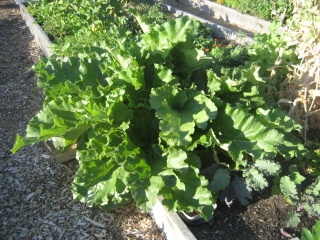 I had a spirited discussion last night about which exactly is the best way to cook a rhubarb crumble — and just what is the difference between a crisp and a crumble.
I had a spirited discussion last night about which exactly is the best way to cook a rhubarb crumble — and just what is the difference between a crisp and a crumble.
We also dropped a gauntlet re: whose recipe is better.
A crisp and a crumble, it turns out, are the same thing but which term you use depends on whether you favour the American or UK terminology. True to my Canadian roots, I favour the latter. (Also note the spelling of “favour”, people).
Below is my current favourite recipe for rhubarb crumble. I like to increase the amount of fruit or decrease the amount of sugar, or even a little of both, for a slightly more tart flavour.
I also demand that only real ice cream be used in the dolloping of this dessert. Anything else, like “frozen dessert” or “whipped topping” is likely a petroleum byproduct and not real food (check your labels, people!).
Rhubarb Crumble
- 1 cup light brown sugar, firmly packed
- 1 cup all-purpose flour
- ¾ cup quick cooking rolled oats
- ½ cup melted butter
- 1 teaspoon cinnamon
- 4 cups sliced rhubarb
- 1 cup granulated sugar
- 2 tablespoons cornstarch
- 1 cup water
- 1 teaspoon vanilla
[Note: you can use slightly more fruit and/or a little less sugar with equally good results]
In mixing bowl, combine brown sugar, flour, oats, butter and cinnamon; mix together until crumbly. Press half of the brown sugar and oats mixture into a buttered 8-inch square baking dish. Top with the sliced rhubarb.
In a saucepan combine 1 cup granulated sugar, cornstarch, and the 1 cup of water and vanilla. Cook together until clear, then pour over rhubarb.
Top rhubarb with remaining crumb mixture and bake at 350° for 45 to 55 minutes. Serve with vanilla ice cream. [Note: I usually cook it ahead, then heat it up when company’s on it’s way. It caramelizes the sugar nicely and makes it slightly gooey.]
Bon appetit!
Related post: Rhubarb: Fruit or Vegetable?

